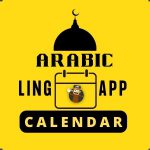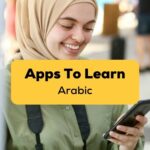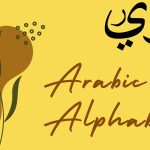Today, with tons of lit language apps emerging, it’s tough to choose which suits your learning preferences. So, this Rosetta Stone VS Mondly review is for you.
Indeed, Rosetta Stone and Mondly have been two of the most popular language-learning platforms that language learners love. In fact, there are lots of success stories about learning new languages using these two language apps.
But of course, when it comes to searching for the best language learning app for yourself, you’ll have to do in-depth researches. You explore different language learning resources, language courses, and language platforms to find a language app that suits you well. So, let me walk you through another helpful review about Rosetta Stone VS Mondly.
Is Language Learning Difficult?
Have you ever wondered why learning a foreign language when you’re an adult seems harder than when you’re a child? It’s simple, our cognitive abilities and learning process change as we age. Some people might think that it is easier to learn a new language when you are a child, but it isn’t. The truth is, there are lots of factors affecting our language learning process as an adult that make it seem hard to learn a new language. This includes our cognitive ability, environment, and our native language. So, what makes it difficult?
Learn From The Beginning
The journey in learning a language starts with learning the alphabet and sound. This is hard for some, especially if their native language is really different from their target language. But, why does it seems so easy for a child? This is because they are just acquiring the knowledge. They do not actually force to learn the language. They are exposed to it, and they have no other language to compare with.
So, in learning a new language, going back to the basics will make it seem hard, but it’s not impossible. If you’re planning to learn different languages, start learning a language that is close to your native language so that learning the alphabet and learning new words will not be too heavy for you.
Zero Vocabulary
One of the most frustrating feelings in the world is being in a place where you don’t understand any single word or phrase that you see and hear from native speakers. Learning new words and phrases is one of the most difficult parts of learning a new language. It will be harder if you have a poor memory to remember all the essential words and phrases.
Although it’s one of the proven most effective ways to enrich vocabulary, memorization is still in the lowest hierarchy in Bloom’s taxonomy. The key to learning vocabulary quickly and easily is to expose yourself to the language. You can watch movies or series in your target language without subtitles, listen to songs, or even label the things in your house using your target language.
Undeveloped Speaking Skills
If you ask people what’s scary in speaking a foreign language, the most answer you’ll get is that they are scared. They are scared of wrong pronunciation, especially when they are speaking in front of a native speaker. Since speaking abilities are one of the language skills that need to be developed, a language learner should really learn about the right tones and the diction to sound like a native speaker.
In developing speaking skills, you should immerse and expose yourself to the native language itself. You can watch videos of native speakers, watch movies, or listen to podcasts to learn the right pronunciation of the words and expressions. After that, you can practice by talking to yourself in front of the mirror. It might sound funny, but it is actually effective. You can also look for a language exchange partner to practice with. The different social media platforms will help you connect to native speakers from different parts of the world.
Understanding The Grammar
Understanding the grammar of a foreign language is not a joke. For some, it can be totally frustrating. Every language has well-structured written and spoken languages. Learning the grammatical structure is hard, especially if you are really new to the language you are learning.
Just like what is stated above, immersing yourself in the language is the key. In this area, you’ll really have to do an in-depth study and research about the grammar of a language through valid resources. Some even enroll themselves in language courses. You can start with the alphabet first and work your way up. Of course, books and other resources could help you, but observing native speakers speak is still one of the best ways.
Yes, language learning is daunting at first, but it doesn’t mean it’s impossible. There’s a lot of factors that contribute to the language learning success of a person, not just cognitive ability. In the end, it is still your motivation, passion, and willingness that will determine your success in your language learning journey. If you are really determined, who or what can stop you?
Discovering The Two Language Learning Apps
Rosetta Stone VS Mondly. In hunting for the best language learning software, you may have encountered these two big names in the language learning platform community. Undoubtedly, these two apps are popular with people who want to learn languages or even teach languages. In fact, there’s a lot of Mondly and Rosetta Stone reviews throughout the internet to see if these apps are really effective in learning languages.
So, in Rosetta Stone VS Mondly, what are the goods and the bad? Let’s discover it thoroughly!
Getting To Know Rosetta Stone
Does this name sound familiar to you? Yes, you have heard it right. This name was derived from the ancient Egyptian artifact. Allen Stoltzfus founded it in 1992 despite his failures in his own language learning journey. Rosetta Stone had already gone a long way since 1992. In 2003, it went global and continued to provide language learning solutions up until this day. In fact, 2021 is a year of transformation for Rosetta Stone because it has partnered with IXL Learning, Vocabulary.com, Education.com, and Wyzant.
Rosetta Stone is a language learning platform that uses immersion to learn a new language. The developers believe that the best way to learn a language is to surround yourself through real-life scenarios, audio from native speakers, and interactive activities. With Rosetta Stone, you’ll be able to succeed in language learning by introducing new skills at the right pace and practicing what you have learned in different contexts. With this, Rosetta Stone has helped millions of users worldwide.
Design And Interface
Rosetta Stone is visually pleasant. The colors, fonts, and graphics look easy on the eye. It is also easy to use starting from the sign-up process until learning each lesson. The interface is pretty simple. After signing up, you will get to choose what topic you want. You will learn this topic through smart flashcards with videos, audio recordings, and interactive activities.
Languages Offered
Rosetta Stone offers the common languages that language learners learn. Here are all the languages offered by Rosetta Stone:
| English (American) | English (British) | Spanish (Latin America) | Spanish (Spain) | Portuguese (Brazil) |
| Latin | Arabic | Greek | Hebrew | Dutch |
| Swedish | Irish | Turkish | Polish | French |
| Russian | Persian (Farsi) | German | Italian | Hindi |
| Chinese (Mandarin) | Korean | Japanese | Vietnamese | Filipino |
Features Of Rosetta Stone
Rosetta Stone offers different features to improve the different language skills of learners and achieve their language goals. Below are the main features of Rosetta Stone:
1. Rosetta Stone Courses
Rosetta Stone’s courses are the main feature of this language platform. This course enables language learners to have a series of basic lessons and activities that lasts from 5 to 10 minutes. Hearing a word, phrase, or sentence and matching it with the corresponding picture is mostly the kind of activity you’ll encounter. This improves one’s listening skills and widens vocabulary. It also uses a speech recognition system to practice the users’ speaking skills.
What’s interesting about Rosetta Stone courses is that they give focus on immersion rather than grammar explanations. It has the “learn like a child” approach that’s learners won’t have support from their native language. They will rely solely on contexts and intuition as they progress.
2. Phrasebook
If you have seen a language learning app that uses the flashcard flipping method, the Phrasebook feature of Rosetta Stone is similar to that. This method is useful in learning vocabulary units while hearing the correct pronunciation from native speakers of your chosen language. It also has different categories to choose from.
3. Live Lessons
You can engage in interactive 25-minute lectures that focus on subjects particular to your course using the Live Lesson feature. With this feature, language learners will have a chance to interact with each other by participating in polls, talking with other learners, and practicing pronunciation. The bonus part is you can also learn about the culture of your target language.
4. Seek and Speak
The Seek and Speak feature will make you learn a language like you’re in a scavenger hunt. After collecting all the items by taking photos of them, you will then use them in conversational statements.
5. Stories
In using this feature, you have a variety of choices. You can read it aloud, record yourself while reading, or you can have it ready by a native speaker. The narratives are short and simple, and they will give you an understanding of the culture of your target language.
6. Audio Companion
The Audio Companion feature uses audio lectures to convey various disciplines and concepts. It works similarly to traditional language learning, where learners repeat sentences spoken by a native speaker.
Pricing
Rosetta Stone offers free lesson and subscription plans. Below are the subscription plans of Rosetta Stone:
| Months | Languages Available | Price |
| 3 Months | One Language Only | US$35.97 |
| 12 Months | All Languages | US$119.88 |
| 24 Months | All Languages | US$ 167.76 |
| Lifetime Unlimited Access | All Languages | US$199 |
Pros And Cons
| PROS | CONS |
| visually pleasant and easy to navigate | the speech recognition feature should be improved |
| immersive learning | lack of lessons for beginners |
| variety of topics and contents | the content is exactly the same across courses |
| wide range of languages offered | no emphasis on grammar lessons and no support on learner’s native language |
| subscription plan offers all languages (except for 3 months subscription) | limited free plan |
Getting To Know Mondly
Mondly is an award-winning language learning app that uses a conversation-focused curriculum, speech recognition, spaced repetition, and gamification. It employs engaging and effective language courses created by a Romania based-team. This language learning app also focuses on the learners’ target language with the help of their native language. A wide variety of methods and activities are available to make learning not only meaningful but fun.
Today, more than 20 million language learners benefit from Mondly, which helps them achieve their maximum potential in language learning.
Design And Interface
Mondly has a superb design and visual elements. Everything is well thought from the color down to the theme. Learning with Mondly is themed like you are traveling. It is like a map where each destination is a different topic or lesson that you need to finish. Your language learning experience will be a journey, with each stop (category) providing fresh experiences and lessons.
Languages Offered
Mondly also offers a wide variety of languages. See the table below:
| English (British) | English (American) | Spanish | French |
| German | Italian | Russian | Afrikaans |
| Greek | Turkish | Bulgarian | Romanian |
| Japanese | Chinese | Korean | Vietnamese |
| Latin | Latvian | Lithuanian | Arabic |
| Czech | Urdu | Hungarian | Ukrainian |
| Danish | Finnish | Swedish | Norwegian |
| Catalan | Slovak | Tagalog | Hindi |
| Croatian | Polish | Indonesian | Bengali |
| Dutch | Hebrew | Portuguese | Persian |
Features Of Mondly
1. Daily Lessons
The Daily Lesson feature is Mondly’s primary feature in learning bite-sized lessons. You’ll have a chance to learn a new language with the help of your native language. You will then pick a topic that interests you. In learning these lessons, you will hear words and phrases from your target language, and you will associate them with the words and phrases from your native language.
The Daily Lessons are themed like a game wherein you progress every correct answer. It uses spaced repetition system to help you transfer what you have learned from short-term memory to long-term memory. At the end of the lesson, you will be reminded of the new vocabulary you have learned. You will also see a leaderboard that will determine how well you progress compared to another language learner.
2. Learning Activities
The learning activities in each Mondly’s lesson are divided into three categories:
- Vocabulary Learning Activities – match pictures to the words
- Translation Activities – translate words, phrases, and sentences from your native language to the target language
- Word order activities – arrange the words to form a meaningful phrase or sentence
3. Chatbot
Mondly also offers a dialogue component where you may participate in the conversation by using speech recognition technology and changing the speed of playback. It aims to practice your speaking abilities while also allowing you to practice the language you’re learning in a dialogue setting.
4. Virtual Reality
One of the most amazing features of Mondly is Virtual Reality. With this feature, you can be in an actual setting where you can use what you have learned, like in a taxi, restaurant, or hotel.
5. Augmented Reality
The Augmented Reality feature of Mondly lets you create your own environment where you may engage, discover, and explore. You can also learn languages while interacting with your new environment.
6. Mondly For Business And Mondly Kids
Mondly also caters to the needs of businesses and kids through Mondly for Business and Mondly for Kids. They develop the app according to the type and needs of learners to achieve their goals. Mondly for Business ideal if you manage an international company and want your staff to learn a new language that they can utilize in the workplace. Mondly for Kids makes learning languages extra fun through games and superb visual elements.
7. Blog
Mondly also has blogs where you can read different topics related to language learning. This is perfect for someone who wants to develop their language skills and a broader grasp of the culture.
Pricing
Mondly offers a free plan and premium subscription plan. Check the table below for the prices.
| Months | Languages Available | Price |
| One Month | One Language Only | $9.99 |
| One Year | One Language | $47.99 |
| One Year | All Languages | $47.99 |
Pros And Cons
| PROS | CONS |
| the aesthetically pleasing and well-designed interface | lack of grammar explanations |
| variety of lessons and learning activities | lack clear differentiation for levels of learners |
| uses gamification and spaced repetition | no room for mistakes (but you can always repeat them) |
| generous free plan | subscription plan may limit to only one language (although there’s a plan for all the languages) |
Comparing: Which Will Help You Learn Your Target Language?

Comparing Rosetta Stone VS Mondly is a rollercoaster ride. Each language learning app has unique features that make it stand out from the other one. But, which do you think can help you more in learning your target language?
Rosetta Stone VS Mondly: Design And Interface
This might not make sense to some people, but for me, an easy-to-navigate and pleasant to the eyes app can do wonders on your language learning journey. Some may prefer it to be so artsy and trendy, and some prefer it to be simple. But, one thing is for sure, nobody wants a language learning app that isn’t easy to use, especially for learners from older generations.
For our topic, Rosetta Stone VS Mondly, both are easy to navigate in terms of design and interface. But it is no doubt that Mondly has a more developed interface and trendy vibe. Travel-themed learning is a trend nowadays, not just for apps but also for games.
For the graphics and multimedia, the use of real pictures of native speakers is commendable. In fact, you can even hear background noises from the videos, making it feel that you’re actually in the same place where the native speaker is.
So, for Rosetta Stone VS Mondly in terms of design, the question that learners should answer is, “Do you want it to be minimalist or trendy?”
Rosetta Stone VS Mondly: Languages Offered
By just looking at the languages offered by Mondly and Rosetta Stone, you can see that Mondly has more languages to offer. But, this should not be your primary basis. The first thing to consider is, “Is your target language available?” next, “Am I a beginner, intermediate or advanced learner?”.
Even if Mondly has a lot of languages to offer, if your target language is not available, then, you won’t be achieving your goal. Next, as I mentioned above, Rosetta Stone immerses you in your target language from the beginning, with no translations and no explanations. Unlike Mondly, you will be learning from your native language or a language that you are comfortable with. So, in this area, it is really your call.
Rosetta Stone VS Mondly: Features
When it comes to features, there’s a huge difference between Rosetta Stone VS Mondly. For starters, Rosetta Stone applies the “learn like a child” approach, which immerses learners in their target language since day 1. Whereas Mondly still values the support of your native language in learning another language.
Both Rosetta Stone’s Courses and Mondly’s daily can really widen your vocabulary. These apps both have a variety of learning activities that are said to improve different language skills, such as vocabulary, speaking skills, reading skills, listening skills, and others. They both incorporate their visions for language learning in every activity.
In Rosetta Stone, if you’re a beginner, everything can be tough for you, especially if it’s a language very different from your native language. There will be no translations, just context, and intuition. The lack of grammar explanations is really challenging, and the contents are just like one content that is being translated into different languages. It follows the same order as the English language, making it not too reliable for languages that have more complicated grammatical structures and levels of formality.
In Mondly, the use of the native language is commendable, but the contents lack differentiation between levels of learners. It also lacks detailed grammar explanations for not-so-common languages to learn. Of course, some languages are mostly learned by learners, but they still shouldn’t compromise the other languages. Mondly has a lot more exciting features, but these features still need to be improved.
In choosing the best language learning software for you, you should consider your own learning style and the quality of learning you get. Since these two apps are very different from one another, learners will only be the ones to determine which suits them well.
Rosetta Stone VS Mondly: Gamification
Gamifiying learning is one of the most popular features that language apps include on their platforms. It doesn’t just make learning fun, but it also motivates learners to do better. Luckily, these two apps have gamification features. Rosetta Stone has built-in games. Aside from built-in games, Mondly also has the leaderboard to see how well you did in the lesson competing with other users.
Rosetta Stone VS Mondly: Spaced-Repetition
The spaced-repetition system is the different scheduled re-appearance of words and phrases. In Rosetta Stone VS Mondly, both apps have a spaced-repetition system, which is good for language learners.
Rosetta Stone VS Mondly: Operating System
In choosing between Rosetta Stone VS Mondly, you have to know which is available to the operating system and gadget you are using. It’s a good thing that both apps can be accessed through their web version Rosetta Stone and Mondly. Rosetta Stone App and Mondly App are also available in both ioS and Android.
Rosetta Stone VS Mondly: Pricing
When it comes to the subscription plans between Rosetta Stone VS Mondly, obviously, Mondly is way cheaper than Rosetta Stone. Fun fact, on Mondly, they already use the currency of the country of your native language, so you don’t have to convert from USD to your currency. Mondly also has a more generous free version than Rosetta Stone.
In discovering which one is worth it, I suggest that you try the free version first and make the most out of it before subscribing to a plan. This will give you ideas about what you’ll learn in the app. Today, it’s hard to find a totally free language learning app, so choose wisely.
Final Thoughts
Rosetta Stone VS Mondly has been a long journey, but I hope that this comparison will help you discover more about these two apps. In the end, it is still your call which one to choose because you know your preferences and budget. As you can see, Rosetta Stone and Mondly cater to different types of learners, so it is quite unnecessary to compare these two apps.
As a language teacher, I also believe that immersion is one of the best ways to learn a new language effectively. Rosetta Stone’s immersive language learning approach is quite an impressive move, but it still needs a lot more improvement. Developers should really take time to design each topic based on the languages’ nature and grammatical rules.
On the other hand, Mondly’s incorporation of technological innovations in language learning also deserves commendations. Since we are in the digital world right now and the population of language learners belongs to the younger generation, using technology is a wise and a genius move. But, developers should never forget that learning languages shouldn’t just be fun. It should also be meaningful and in-depth.
Remember, amazing features and low prices are not really the first thing to consider. It’s the kind of learning and language learning journey you’ll get. Do not be deceived by numbers. Look into the quality.
Explore Beyond Your Native Language! Learn With Ling App!
Are you still looking for other options for your language learning journey? Why not try Ling App? Ling App has a balance of fun and meaningful language learning experience. You can choose from a variety of topics. Then, you can learn this topic in smart flashcards where you can learn words and phrases with translations, romanizations, example sentences, images, and audio recordings from native speakers.
Fun and mini-games are also available for engagement and test what you have learned—Master the language with extensive grammar tips and instructions based on thorough research. You can also be used what you have learned in dialogues and chatting with chatbots.

These are just a few of the fantastic things that Ling App can offer. Why don’t you start your free lesson now and see how it can revolutionize your language learning experience?

















